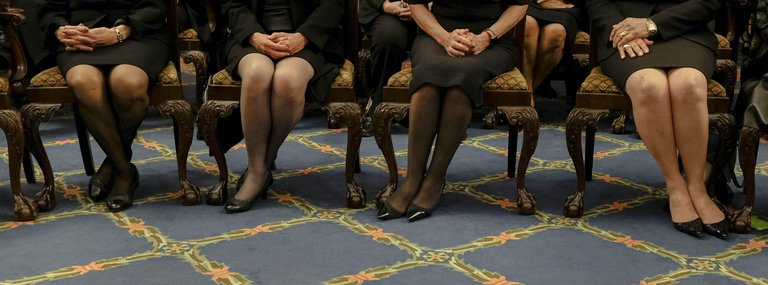Metoo Has Done What the Law Could Not
By Catharine A. MacKinnon
The #MeToo movement is accomplishing what sexual harassment law to date has not. This mass mobilization against sexual abuse, through an unprecedented wave of speaking out in conventional and social media, is eroding the two biggest barriers to ending sexual harassment in law and in life: the disbelief and trivializing dehumanization of its victims. Sexual harassment law — the first law to conceive sexual violation in inequality terms — created the preconditions for this moment. Yet denial by abusers and devaluing of accusers could still be reasonably counted on by perpetrators to shield their actions. Many survivors realistically judged reporting pointless. Complaints were routinely passed off with some version of “she wasn’t credible” or “she wanted it.” I kept track of this in cases of campus sexual abuse over decades; it typically took three to four women testifying that they had been violated by the same man in the same way to even begin to make a dent in his denial. That made a woman, for credibility purposes, one-fourth of a person. Even when she was believed, nothing he did to her mattered as much as what would be done to him if his actions against her were taken seriously. His value outweighed her sexualized worthlessness. His career, reputation, mental and emotional serenity and assets counted. Hers didn’t. In some ways, it was even worse to be believed and not have what he did matter. It meant she didn’t matter. These dynamics of inequality have preserved the system in which the more power a man has, the more sexual access he can get away with compelling. It is widely thought that when something is legally prohibited, it more or less stops. This may be true for exceptional acts, but it is not true for pervasive practices like sexual harassment, including rape, that are built into structural social hierarchies. Equal pay has been the law for decades and still does not exist. Racial discrimination is nominally illegal in many forms but is still widely practiced against people of color. If the same cultural inequalities are permitted to operate in law as in the behavior the law prohibits, equalizing attempts — such as sexual harassment law — will be systemically resisted. Continue reading the main story RECENT COMMENTS Me2 6 hours ago Thank you for this timely perspective. As a survivor of sexual misconduct in the workplace as well as from childhood sexual abuse, I want... Robert 6 hours ago I don’t trust mobs of any kind, even when they’re advocating for things I support. J.C. 6 hours ago It would be so refreshing for a feminist writer to stand up for worker's rights, not just when it's sexual and just when it happens to women... SEE ALL COMMENTS This logjam, which has long paralyzed effective legal recourse for sexual harassment, is finally being broken. Structural misogyny, along with sexualized racism and class inequalities, is being publicly and pervasively challenged by women’s voices. The difference is, power is paying attention. Powerful individuals and entities are taking sexual abuse seriously for once and acting against it as never before. No longer liars, no longer worthless, today’s survivors are initiating consequences none of them could have gotten through any lawsuit — in part because the laws do not permit relief against individual perpetrators, but more because they are being believed and valued as the law seldom has. Women have been saying these things forever. It is the response to them that has changed. Revulsion against harassing behavior — in this case, men with power refusing to be associated with it — could change workplaces and schools. It could restrain repeat predators as well as the occasional and casual exploiters that the law so far has not. Shunning perpetrators as sex bigots who take advantage of the vulnerabilities of inequality could transform society. It could change rape culture. Sexual harassment law can grow with #MeToo. Taking #MeToo’s changing norms into the law could — and predictably will — transform the law as well. Some practical steps could help capture this moment. Institutional or statutory changes could include prohibitions or limits on various forms of secrecy and nontransparency that hide the extent of sexual abuse and enforce survivor isolation, such as forced arbitration, silencing nondisclosure agreements even in cases of physical attacks and multiple perpetration, and confidential settlements. A realistic statute of limitations for all forms of discrimination, including sexual harassment, is essential. Being able to sue individual perpetrators and their enablers, jointly with institutions, could shift perceived incentives for this behavior. The only legal change that matches the scale of this moment is an Equal Rights Amendment, expanding the congressional power to legislate against sexual abuse and judicial interpretations of existing law, guaranteeing equality under the Constitution for all. But it is #MeToo, this uprising of the formerly disregarded, that has made untenable the assumption that the one who reports sexual abuse is a lying slut, and that is changing everything already. Sexual harassment law prepared the ground, but it is today’s movement that is shifting gender hierarchy’s tectonic plates.
|
.
Any original material on these pages is copyright © BishopAccountability.org 2004. Reproduce freely with attribution.
